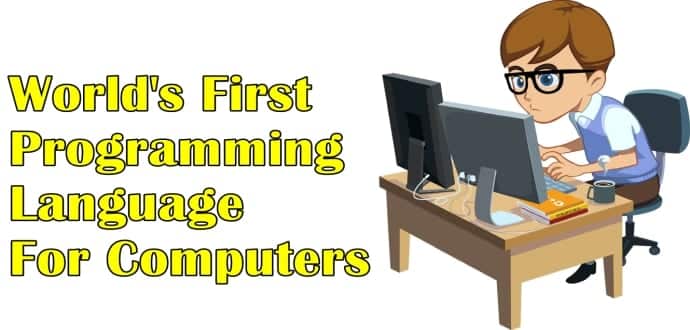Believe it or not, Plankalkül the world’s first programming language for computers was written in 1942
Today we live, breathe, and die computers. Our day usually begins with checking our smartphones to switching on our laptops. When we reach the office, we switch on the desktop to start the days work. All these gadgets are powered by an operating system written in various programming languages like C++, Java, Python etc. Even as we read this article, newer languages like Google’s Go and Apple’s Swift are slowly gaining popularity.
In this world of C, C++, Java, Ruby on Rails etc. which was the first programming language ever written? This is a very difficult question to answer. History of programming languages starts with Ada Lovelace (1840) who is widely regarded as the first programmer. The “set of symbols” she developed is considered the first programming language by many purists. However, another school of thought considers Alan Turing’ to be the world’s first programmer cite the descriptions Of Turing machine (1936). To back up their claims, they cite various programs and mathematical simulation written by Turing.
World’s first programming language
It can’t be conclusively said but a programming language known as Plankalkül seems to be the first programming language ever written for computers. Taking the high-level non-von Neumann languages for a computer as a basis, Plankalkül, pronounced “Plan Calculus”, is widely considered the first programming language (Source: Wikipedia, StackExchange). Plankalkül was created by a German engineer Konrad Zuse for engineering purposes between 1942 and 1945. The literal meaning of Plankalkül is “formal system (kalkül) for planning (plan)”.
Plankalkül was created by Zuse somewhere between 1942 and 1945. However, it failed to gain any attention in the world which was busy with fighting wars (WWII) and died a natural dead. It is believed that Fortran and Lisp take off from where Plankalkül left off. Also, notes about how Zuse worked on developing Plankalkül in 1941, with scribblings survive to this date. Another reason why Plankalkül failed to make any headlines was that Zuse himself become busy with this his efforts to commercialise the Z3 computer and its successors. In 1944 Zuse met with the German logician and philosopher Heinrich Scholz and they discussed Zuse’s Plankalkül. In March 1945 Scholz personally expressed his deep appreciation for Zuse’s utilization of the logical calculus.By 1946, Zuse had written a book on the subject but this remained unpublished. In 1948 Zuse published a paper about the Plankalkül in the “Archiv der Mathematik” but still did not attract much feedback – for a long time to come programming a computer would only be thought of as programming with machine code.
Here’s how Hello world! would be written in Plankalkül, the world’s first programming language for computers:
R1.1(V0[:sig]) => R0
R1.2(V0[:m x sig]) => R0
0 => i | m + 1 => j
[W [ i < j -> [ R1.1(V0[i: m x sig]) => R0 | i + 1 => i ] ] ] END
R1.3() => R0
‘H’;’e’;’l’;’l’;’o’;’,’;’ ‘;’w’;’o’;’r’;’l’;’d’;’!’ => Z0[: m x sig] R1.2(Z0) => R0
END
While in 1945, Plankalkü failed to gain any attention, it was comprehensively published and implemented in a dissertation in late 1972. Later in 1998 and 2000, there were instances of other independent implementations.

